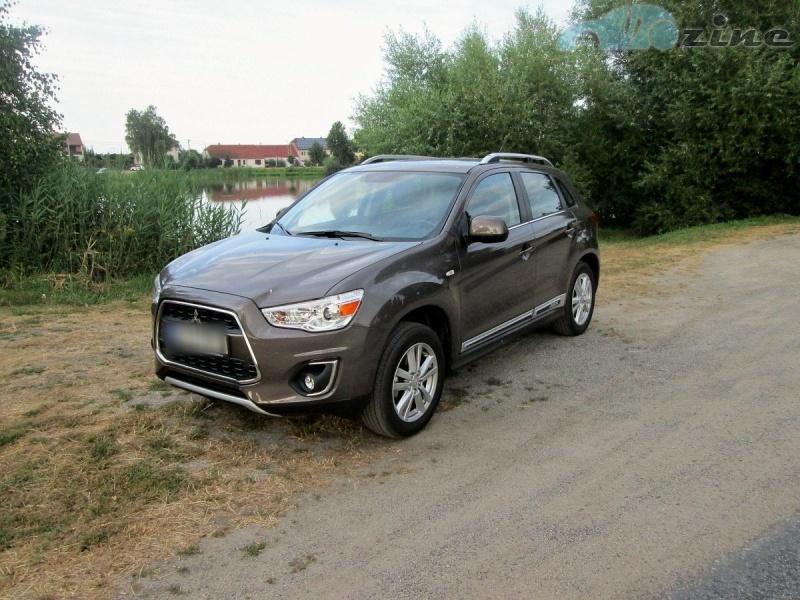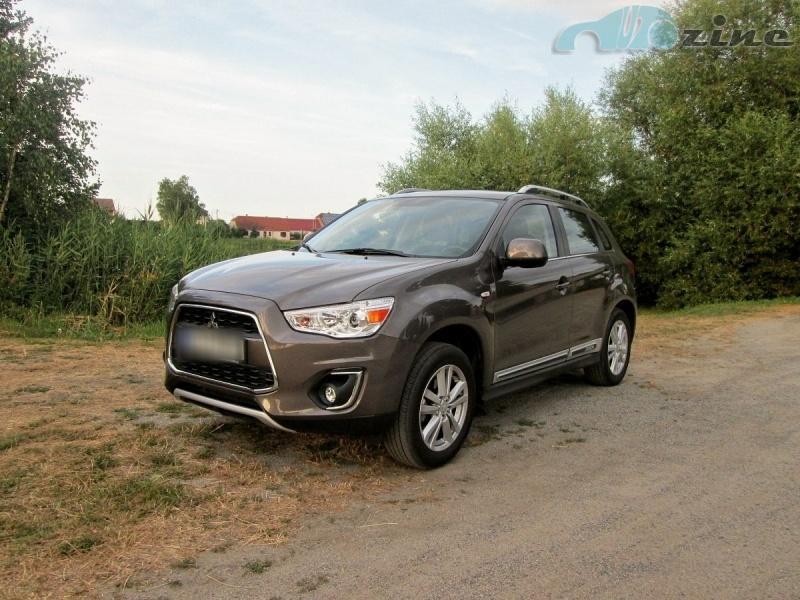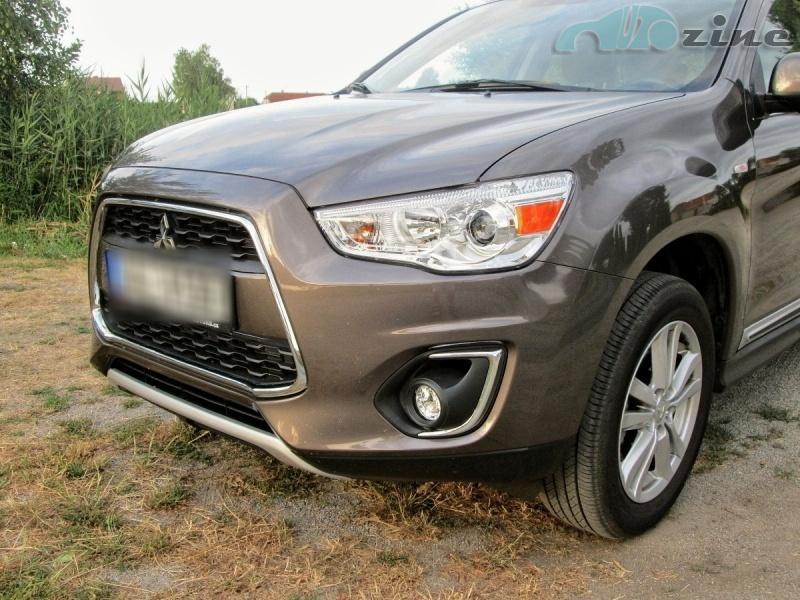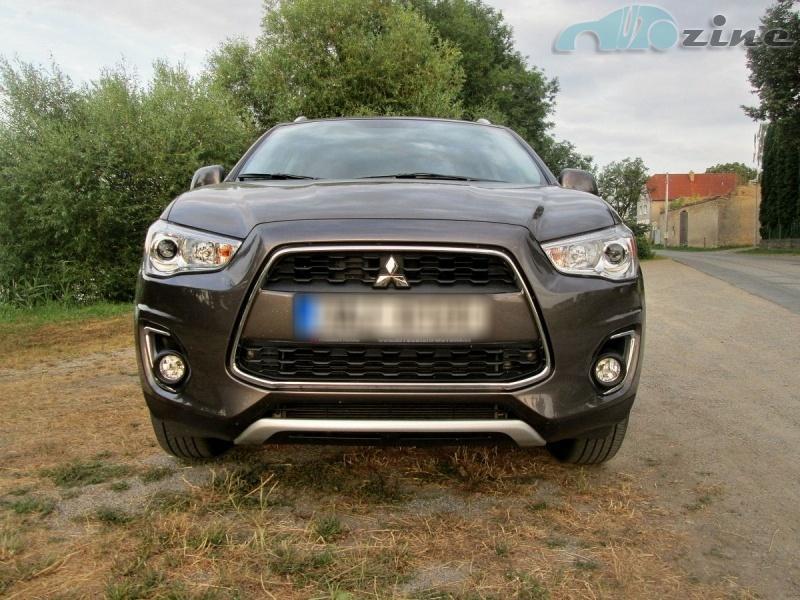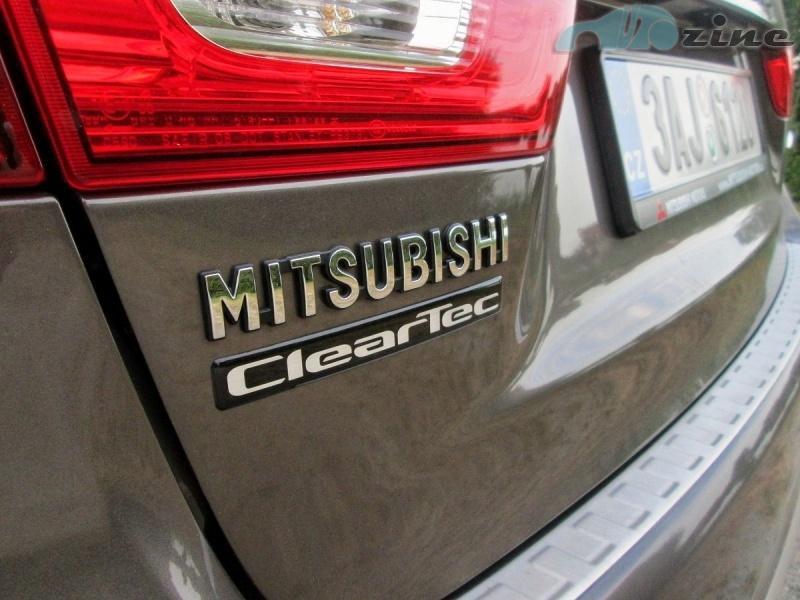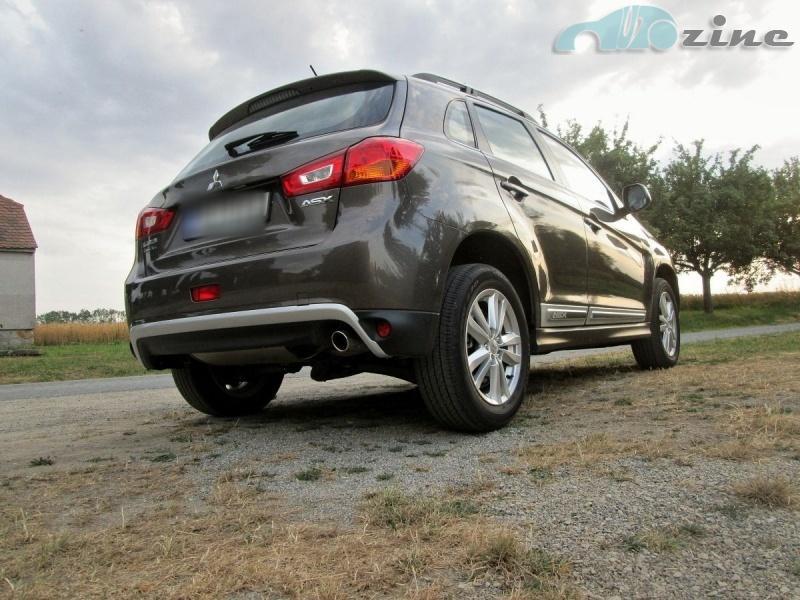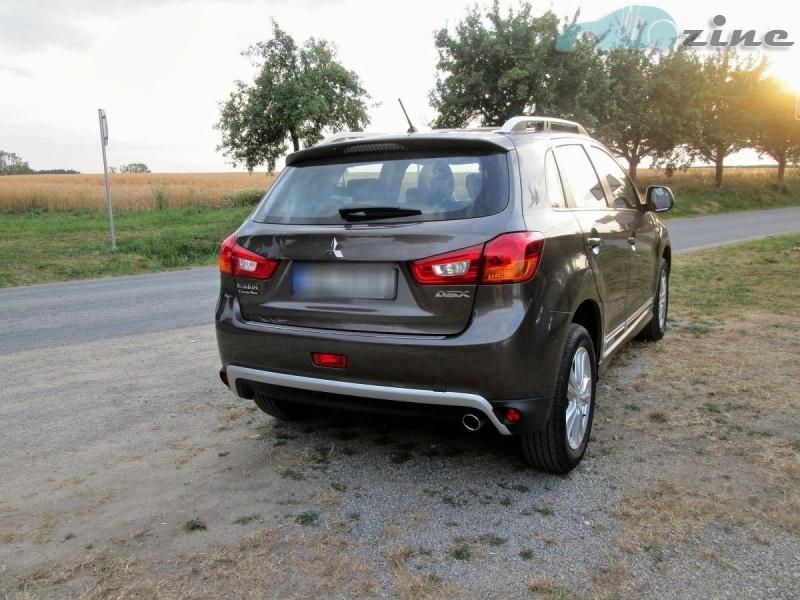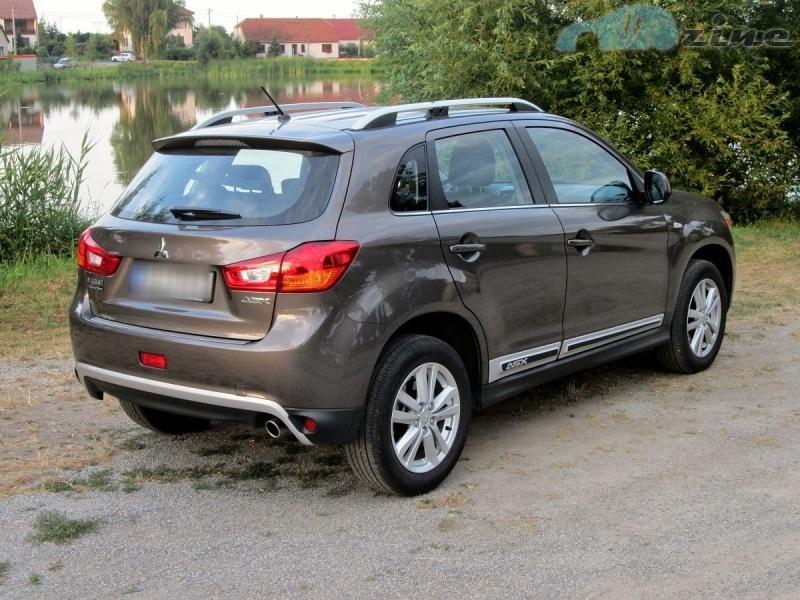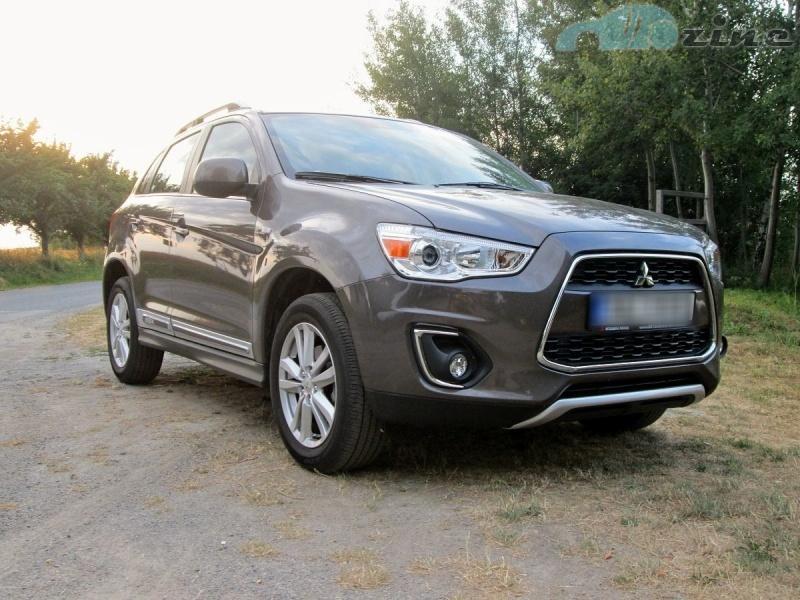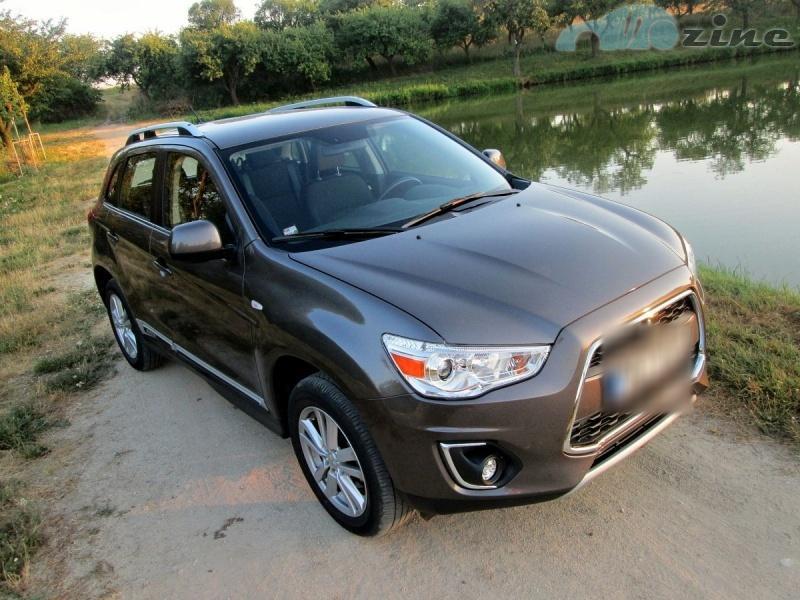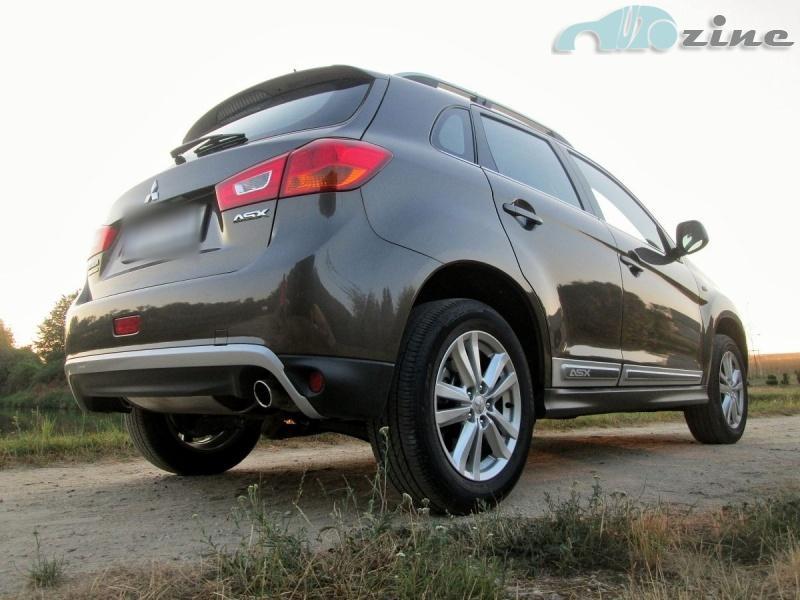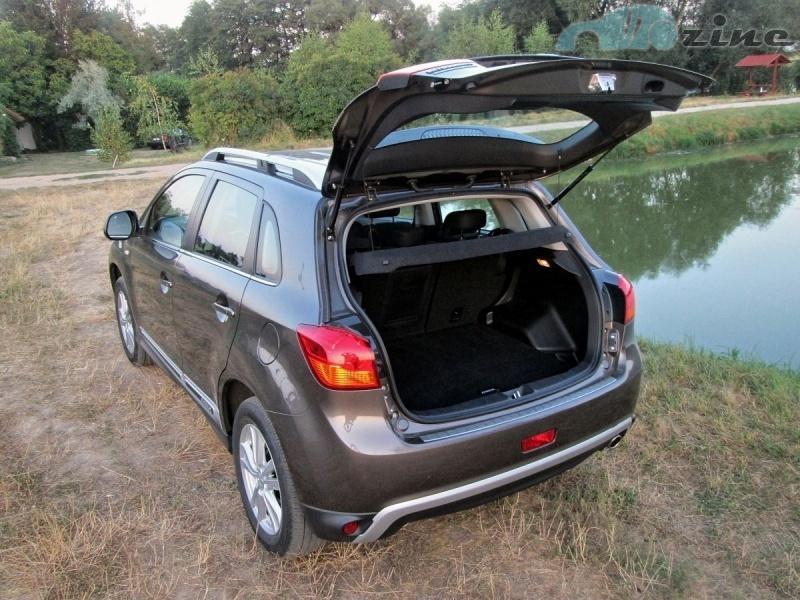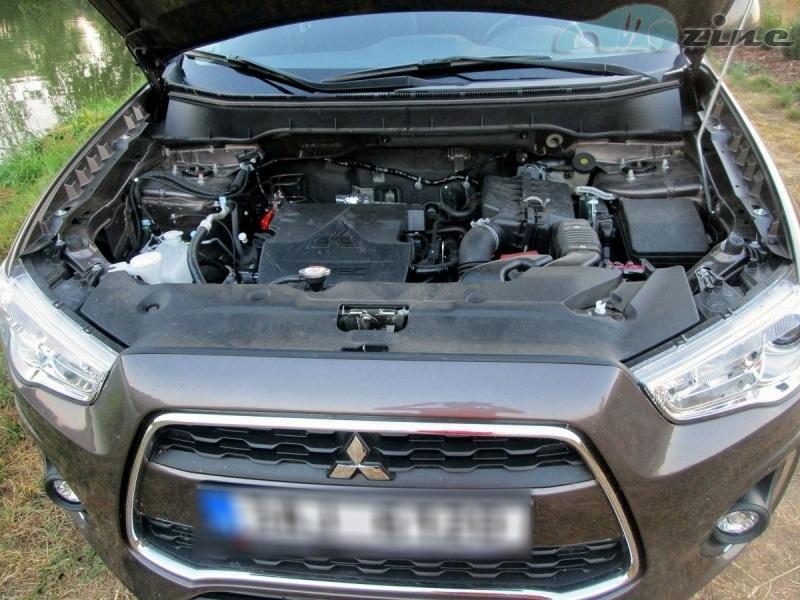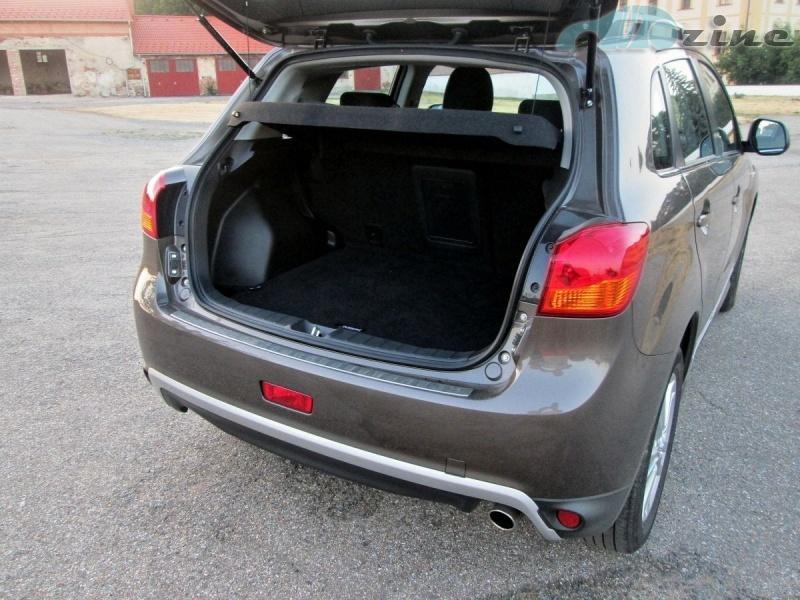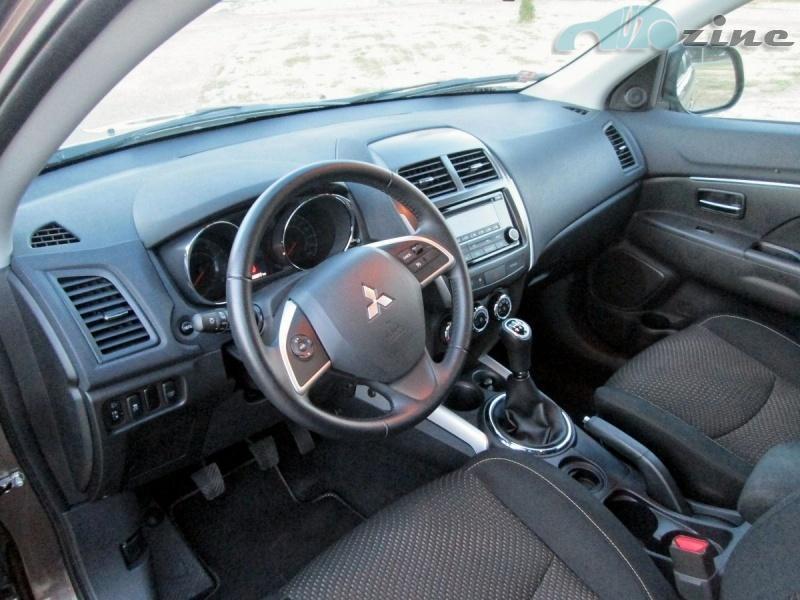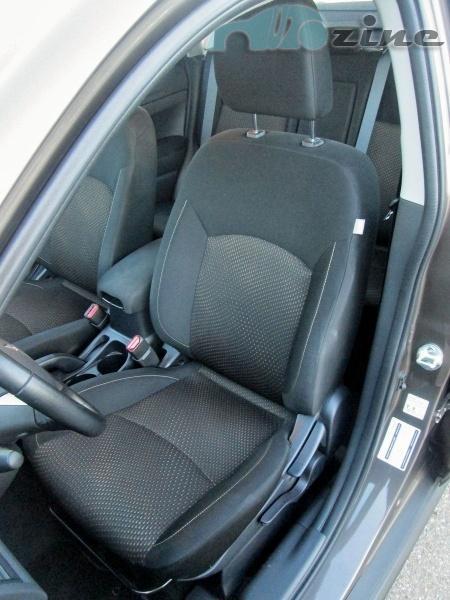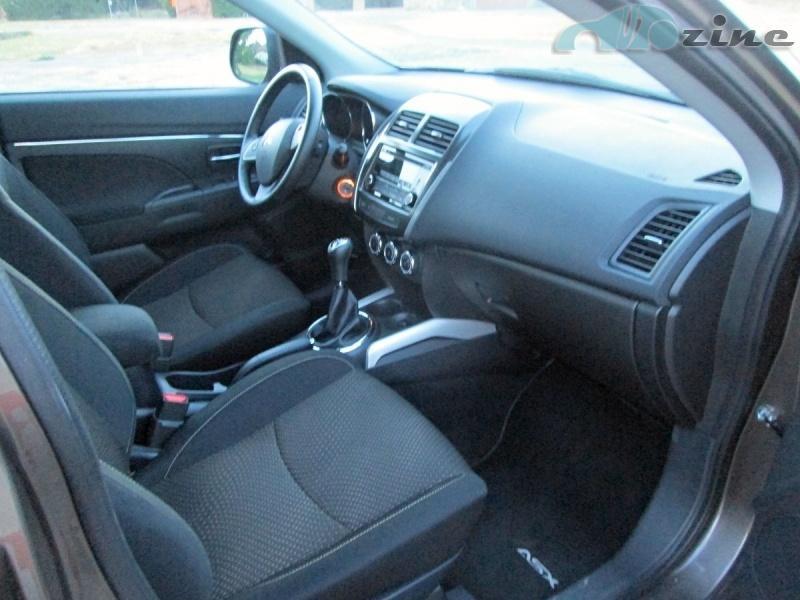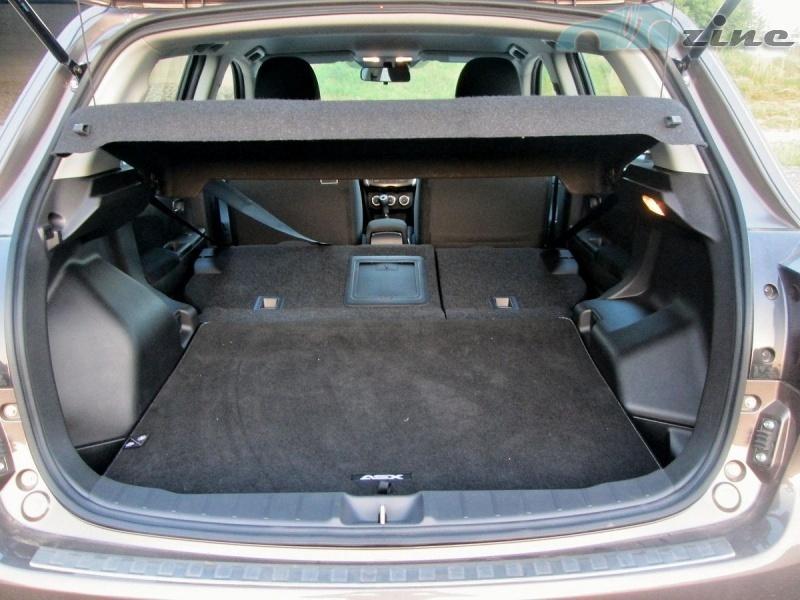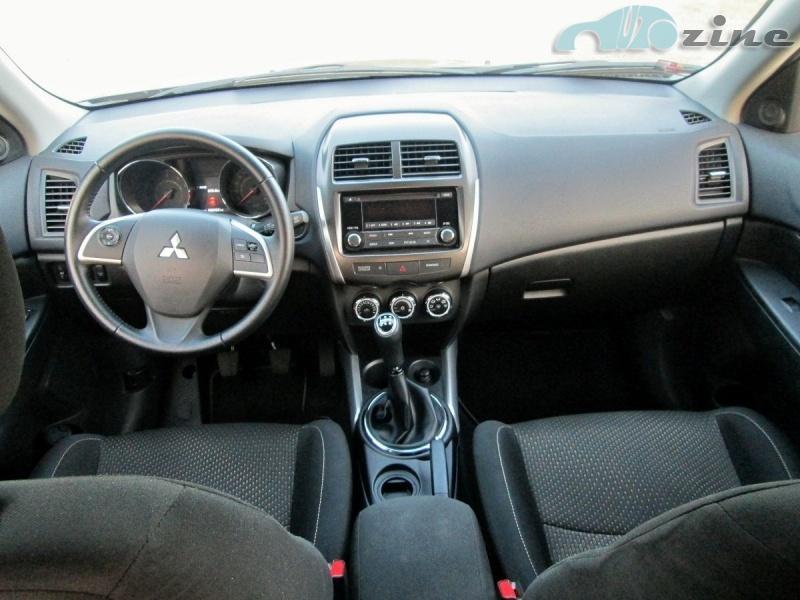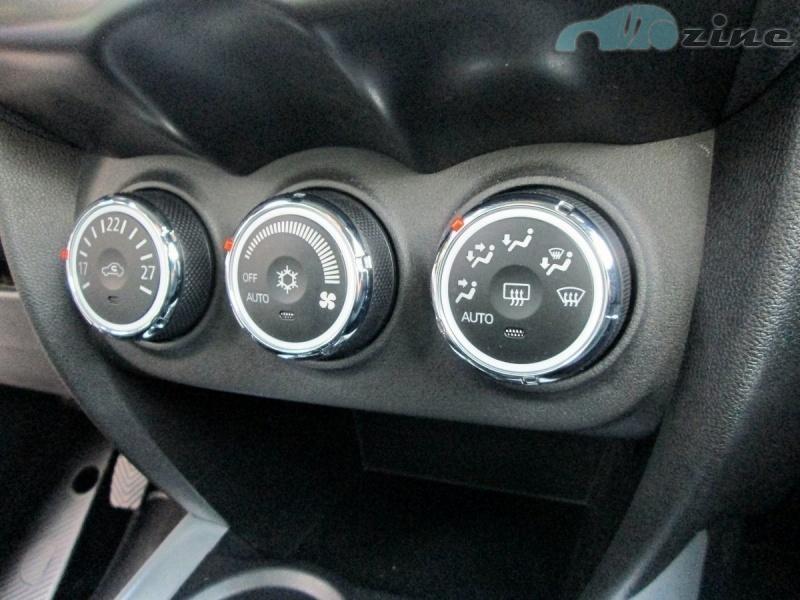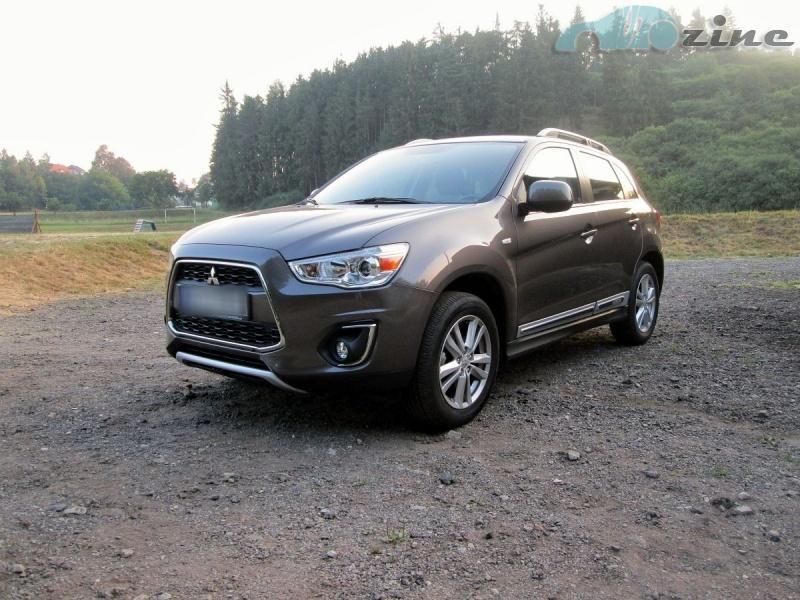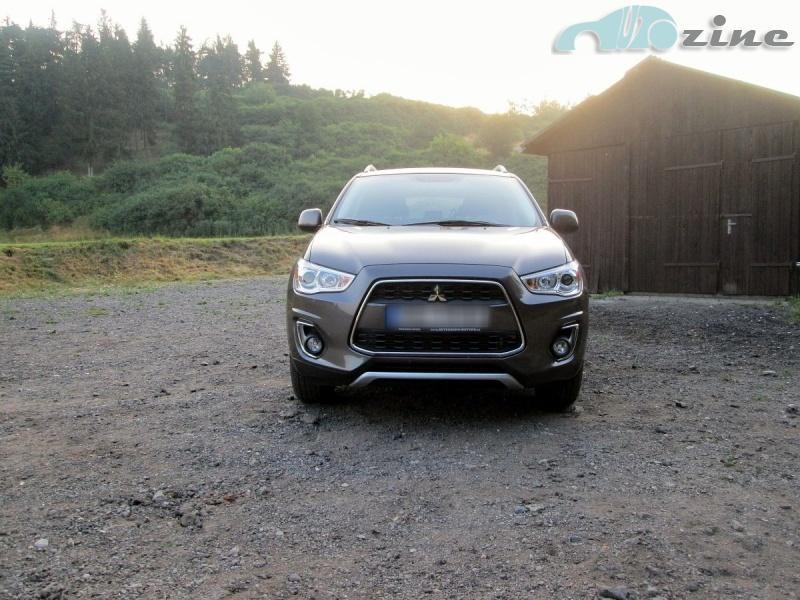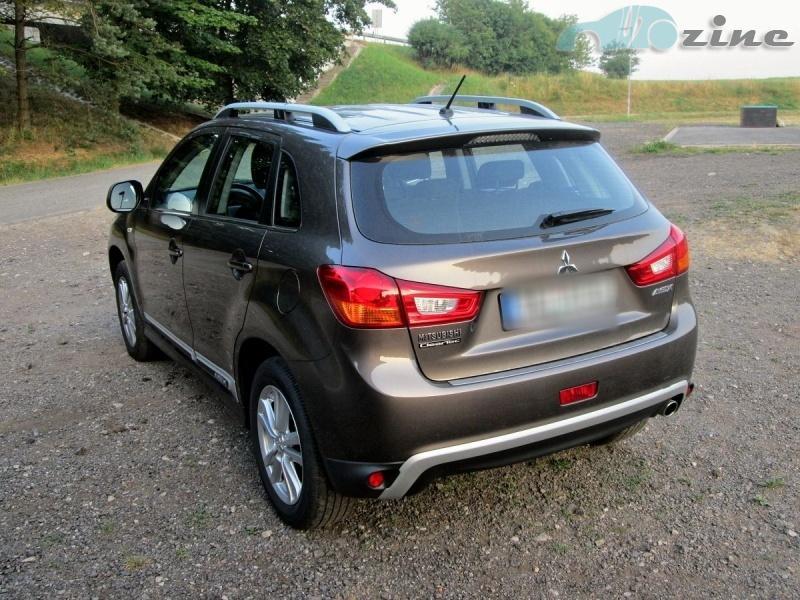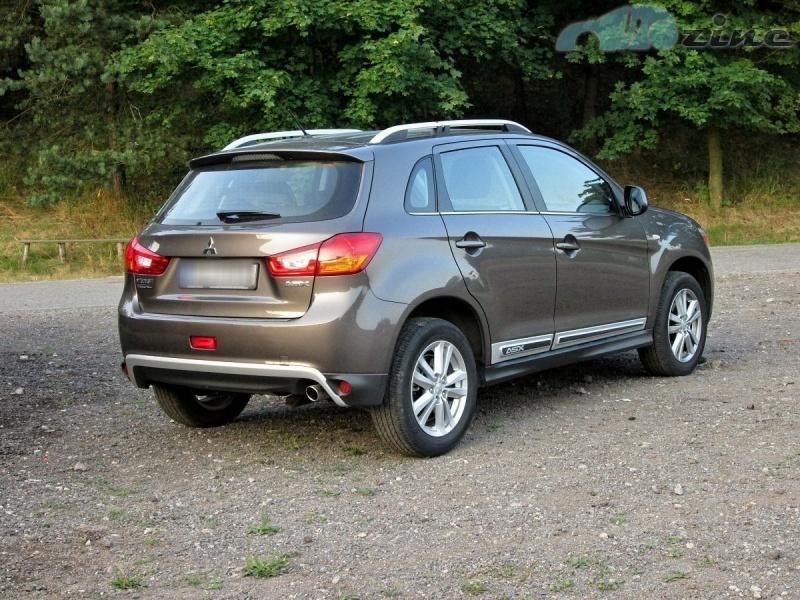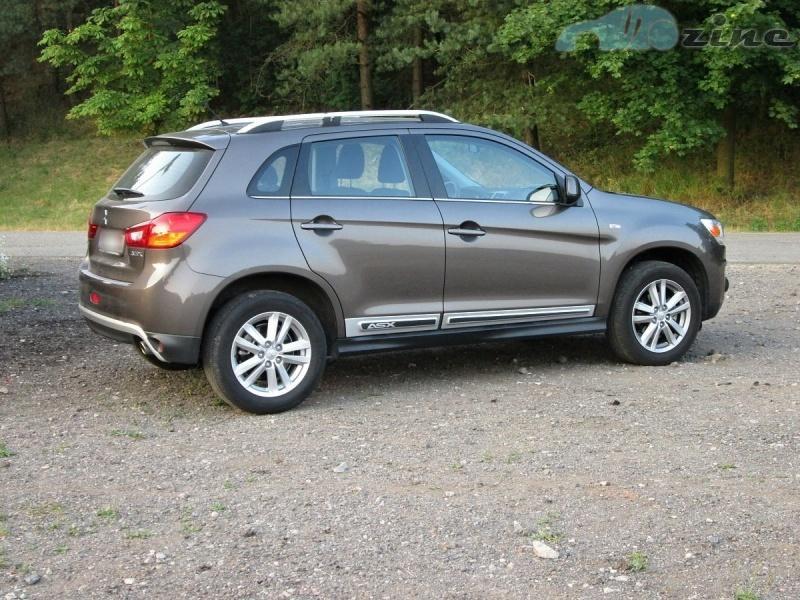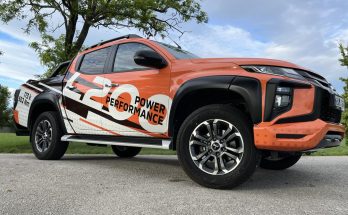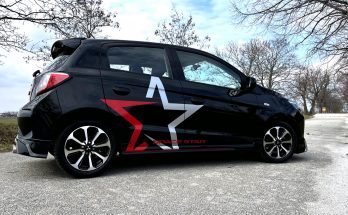The Mitsubishi brand is mainly known for its ten generations of the Lancer Evolution , but the automaker would not make much of a living with this alone. Crossovers have also become popular in the last few years, and of course Mitsubishi also needs to make some profit in this segment. That is why in 2010 it presented the compact model ASX at the Geneva Motor Show, whose arrival in 2007 was heralded by the Concept-CX (premiered in Frankfurt).
After three years on the market, the Mitsubishi ASX underwent a slight modernization , which is not recognizable at first glance. You can distinguish it from the original model mainly by the revised bumpers, new mask and redesigned front headlights. We had the opportunity to test the modernized Mitsubishi ASX in the Invite trim level with a gasoline engine and manual transmission, but without all-wheel drive .
Design – Genes of Outlander
The front part of the tested ASX becomes unmistakable thanks to the dominant trapezoidal mask , which the small SUV borrowed from its sibling – the second-generation Outlander . The front is completed by updated large headlights with good luminosity and, of course, the fog lights have their place in the lower part, under which you can also find the engine protection element. Overall, the front part has a very characterful effect on the surroundings and gives the car a twist.
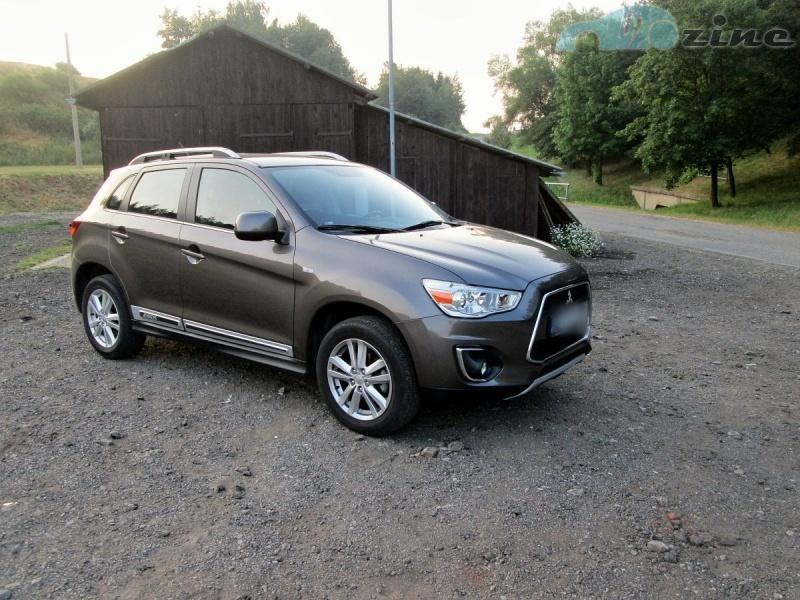
You can tell that it is a Japanese ASX from the side view mainly thanks to the decorative strips in the lower parts (for an extra charge of 9,106 CZK). Compared to the predecessor, there is not much to admire here, perhaps the slightly sloping roof line is worth noting, where in our case there are roof racks (for an extra charge). The tested ASX boasted 16-inch alloy wheels.
At first glance, we notice that the back of the car is frowning at us. This is mainly due to the fact that it can cope with the more aggressive bow. The boot lid boasts the ClearTec label , which is a fuel economy and emissions package. The bottom has a centrally located fog light, a standard chrome exhaust tip and also a protective plastic that can also be found in the front passage. The mentioned scowling look is the merit of the chosen combination, which together create the rear lamps. The Mitsubishi ASX is a handsome, likeable car, and its appearance will certainly not offend anyone.
Interior – Old school
The cabin of the small Japanese SUV gave me a cozy and simple impression, which I don't consider a negative, in short, the ASX is still from the old school . The seats with average lateral support felt comfortable, but after a long journey you can feel the traditional Japanese hardness, but it is not as bad as in previous years. The driver's workplace can only be described as practical . Electric control of all windows is at hand, but do not look for automatic folding of the exterior mirrors (only for the Intense equipment). The three-spoke leather steering wheel with controls for the car radio and cruise control held up reasonably well, and the feedback wasn't bad either. The panel to the left of the steering wheel traditionally housed the controller for the ASC (or ESP) system, headlight settings, and also the AS&G system , in other words Stop/Start, which you will learn more about later.
The instrument panel will offer an analog tachometer and a speedometer, between which there is a color TFT display for displaying the data of the on-board computer. It was controlled using perhaps the largest button in the interior labeled Info , located next to the left tube. We don't find any overpaying on the center panel either, where a car radio with a multifunctional LCD display and six speakers is available in the upper part. Unfortunately, I found perhaps the first ailment in the frame around the radio, my touch was accompanied by a considerable creaking.
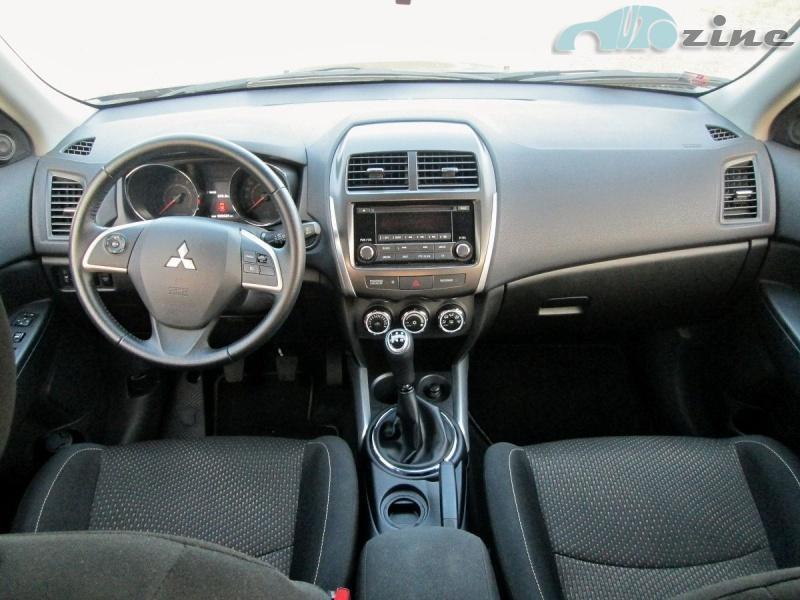
The heating and automatic air conditioning are controlled by three simple rotary knobs located in the middle of the center console and are unfortunately out of the driver's field of vision. The storage space for drinks is placed in an inappropriate way, because when shifting you will bump into that drink and spill it. The leather head of the shift lever fits perfectly in the hand , but it does not please with its quivering. In short, it's not gripped enough, and you sometimes feel like it's stuck in your hand when shifting gears. Of course, I cannot estimate whether this is a defect only with the car we tested or with all models produced. If you travel for a long time, your back will hurt, as I mentioned above, but at least the armrest with storage space , which also has a USB port and a 12V socket , will please you.
It is quite pleasant on the back seats thanks to the wheelbase of 2670 mm , I can definitely sit down on my own, and as for the headroom, it is a hair's breadth for my height (188 cm). Unfortunately, there is no lateral support to be found on the back bench as in the case of the front seats, so during a sharp ride, the passengers in the back will literally fly from side to side. I have personally tested that three well-built gentlemen will simply not sit next to each other in the back seats.
The luggage compartment, equipped with stainless steel load edge protection (for an additional charge of CZK 3,364), offers 442 liters in the basic configuration . After lifting the hard board covered with a soft carpet, on the sides of which there are some kind of " troughs " for small things, we discover a small storage space for mandatory vehicle equipment or tools. After folding the rear bench, there is a space of up to 1219 liters , but don't expect a flat floor. If you would like to transport some longer wooden bars or skis, just open the " window " in the middle of the rear seats and you don't have to fold the seat set for that.
Driving – Economically, but…
Under the hood of the tested Mitsubishi ASX was a 1.6 -liter naturally aspirated four-cylinder MIVEC engine with an output of 117 horsepower at 6,000 rpm and a torque of 154 Nm at 4,000 rpm. The engine was mated to a five-speed manual transmission , which transmitted the horsepower to the front axle. All-wheel drive is offered as standard only in the 1.8 DI-D MIVEC diesel version (price from CZK 525,000). The small Japanese SUV, with dimensions of 4295 mm in length, 1770 mm in width and 1615 mm in height, will not get lost in city traffic, mainly due to its size. However, you have to rely purely on the rear-view mirrors and your driving skills when parking, as the ASX does not have a parking assistant or a rear camera. The AS&G system worked without any problems – the car reaches the intersection, you shift into neutral and the engine shuts off. It then waits for you to depress the clutch pedal and restarts. All this happens in a flash and there were no delays. However, if you are not a fan of that system, it can be turned off completely, but it will need to be done after every boot. Urban fuel consumption, also thanks to AS&G, was around 7.5 liters of Natural per hundred kilometers .

On county roads, the " little Outlander " showed its pros and cons. He willingly accelerates to the speed limit on the roads, but after that he doesn't really want to. Shifting is quite smooth, but I sometimes had trouble shifting into fifth gear. The ideal shift, according to the shift indicator instructions, is around 2200 revolutions per minute , when the gasoline engine is literally in paradise. However, during sharper handling, the rear multi-link axle becomes apparent, which likes to "shoot" in corners, but everything is under control of the ASC system. At the front are traditional McPherson struts. The ASX is especially designed for quiet travel even on mild terrain, and it will reward you with an average consumption of 5.7 l/100 km .
As for the highways, you better avoid them with the ASX, because it doesn't feel very good here. Although it absorbs the well-known panels on the D1 highway with vigor, at higher speeds the ills of the engine's noise reduction appear. At highway speeds, the engine spins at about 3,300 rpm, a sixth gear or otherwise matched gears would solve everything. Unfortunately, on moderate highway gradients, the small SUV has a lot to do and the engine literally gasps for breath. What surprised me, however, is the highway consumption. The on-board computer sometimes showed a value below 6 l/100 km, but on average, expect a consumption of 6.2 liters per hundred kilometers . I traveled over 800 km on a 63 liter fuel tank, which is a good result.
Conclusion – Simple will do!
Before I had the opportunity to test the Mitsubishi ASX , I was still wondering why I meet it on the roads quite often. A weekly test gave me the answer. Yes, the ASX has its quirks, but what car doesn't, right? His mistakes are not that serious and can be forgiven. In the city it will protect its crew with its size, on county roads it is a great vehicle between points A and B. And if you don't spend most of your time on the highway, I highly recommend it. You'll definitely get used to it, and if you don't like current exaggerated systems or assistants, the ASX is the right nut .
Basic price of the car (promotional price): CZK 400,000
Base price of the tested car: CZK 437,574
Pros
– design
– fuel consumption
– purchase price
– a comfortable ride
– sufficiently spacious interior
Cons
– creaking plastics in the interior
– absence of sixth gear
– noise reduction of the engine
– harder seats
Compare the parameters of the Mitsubishi ASX with the competition


